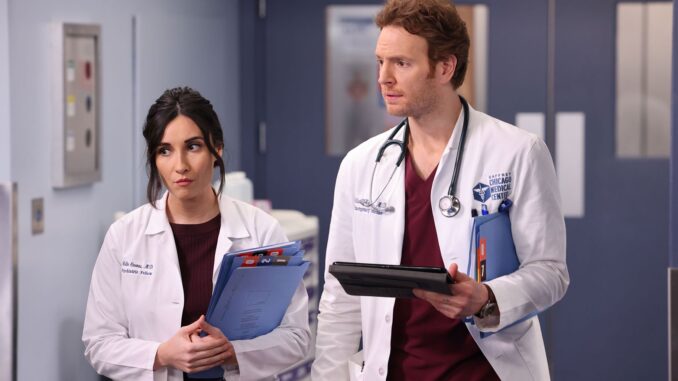
Conjoined twins are a phenomenon that has fascinated the medical world for centuries. When “Chicago Med” introduced a storyline about conjoined twins, many viewers wondered if such a story could exist in real life. The answer? Absolutely. Meet Jason and Victor Turner, two extraordinary brothers who inspired audiences worldwide with their unique story. Let’s dive into their incredible journey, from birth to becoming an inspiration to millions.
What Are Conjoined Twins? A Quick Overview
Conjoined twins are identical twins who are physically connected at birth. This rare phenomenon occurs in about 1 in 50,000 to 1 in 200,000 live births. Their connection can range from minor tissue sharing to more complex organ sharing. In Jason and Victor’s case, their story stands out as both medically fascinating and emotionally touching.
Jason & Victor Turner: The Beginning of Their Journey
A Miraculous Birth
Jason and Victor were born in 1995 in a small town in Illinois. Doctors were stunned to find that the twins were joined at the chest, sharing a liver but having independent hearts. Their parents, Sarah and Michael Turner, described the birth as a mix of overwhelming joy and immense fear.
Early Medical Challenges
The first few months of their lives were filled with uncertainty. The Turner twins underwent countless medical evaluations to determine their health and the possibility of separation surgery. Despite the odds, they thrived together, proving to the world that they were fighters from the very start.
Growing Up as Conjoined Twins
Life Beyond the Hospital
Childhood for Jason and Victor wasn’t ordinary, but their parents ensured it was filled with love and support. The boys quickly learned to adapt to their unique situation. From sharing toys to coordinating movements, they developed a bond that was deeper than most siblings could ever imagine.
Facing Societal Challenges
Growing up in a small town meant the twins often faced curious stares and probing questions. However, their charming personalities and sense of humor quickly won over hearts. They became local celebrities, with their story spreading far beyond their hometown.
Jason & Victor’s Education Journey
Adapting to School Life
Education was a top priority for the Turners. Jason and Victor attended a public school where teachers worked closely with the family to create a learning environment that accommodated their unique needs. Despite the physical challenges, the twins excelled academically, often outshining their peers.
Building Friendships
One of the most remarkable aspects of their journey was their ability to make friends effortlessly. Their classmates admired their resilience and teamwork, which made them an inspiration both inside and outside the classroom.
The Medical Aspect: Could They Be Separated?
A Risky Proposition
Over the years, doctors debated whether separating Jason and Victor was a viable option. While advancements in medical technology made separation surgeries more feasible, the risks involved were incredibly high. The twins, along with their parents, ultimately decided against it, valuing their shared life over potential dangers.
Living as One
Their decision to remain conjoined wasn’t just medical—it was deeply personal. Jason and Victor often spoke about how their connection made them feel whole, emphasizing that they didn’t see themselves as two people, but as one.
Jason & Victor’s Teenage Years
Pursuing Their Passions
The twins were avid fans of music and sports. Despite their physical limitations, they found ways to participate in activities they loved. Jason played the guitar while Victor handled the vocals, creating a duo that became a hit at local events.
Advocating for Inclusion
During their teenage years, Jason and Victor began speaking out about inclusivity and acceptance. Their motivational talks inspired many to embrace their differences and celebrate diversity.
Adulthood: Making Their Mark
A Career in Advocacy
Today, Jason and Victor are prominent advocates for people with disabilities. They travel across the country sharing their story, raising awareness about conjoined twins, and breaking down societal stereotypes.
Media Recognition
Their story caught the attention of producers at “Chicago Med,” leading to a storyline that mirrors their journey. The twins were even invited on set as consultants, ensuring the portrayal was as accurate and respectful as possible.
Life Lessons From Jason & Victor Turner
The Power of Resilience
Jason and Victor’s story is a testament to the human spirit’s ability to overcome challenges. They’ve shown that even the most complex circumstances can be met with grace and determination.
Cherishing Connection
Their bond serves as a powerful reminder of the importance of connection—both physical and emotional. Whether it’s with family, friends, or a community, connection is what makes us human.
Conclusion: Two Hearts, One Extraordinary Journey
Jason and Victor Turner are more than just conjoined twins—they’re symbols of hope, resilience, and love. Their journey, filled with challenges and triumphs, continues to inspire people worldwide. From their early days of medical uncertainty to their current role as advocates, the Turner twins have shown that the most extraordinary stories often come from the most unexpected places.
FAQs
1. Are Jason and Victor Turner still alive today?
Yes, Jason and Victor Turner are alive and thriving. They’ve dedicated their lives to advocacy and raising awareness about conjoined twins.
2. What inspired “Chicago Med” to create a storyline about conjoined twins?
The storyline was inspired by real-life stories of conjoined twins like Jason and Victor, whose journeys highlight both the medical and emotional aspects of their lives.
3. Can conjoined twins live normal lives?
While conjoined twins face unique challenges, many lead fulfilling lives, as seen in Jason and Victor’s inspiring story.
4. Is it possible to separate all conjoined twins?
Not all conjoined twins can be separated. The possibility depends on the twins’ anatomy and the organs they share.
5. What is the rarest type of conjoined twins?
The rarest type is craniopagus twins, who are joined at the head. This condition occurs in only about 1 in 2.5 million births.
